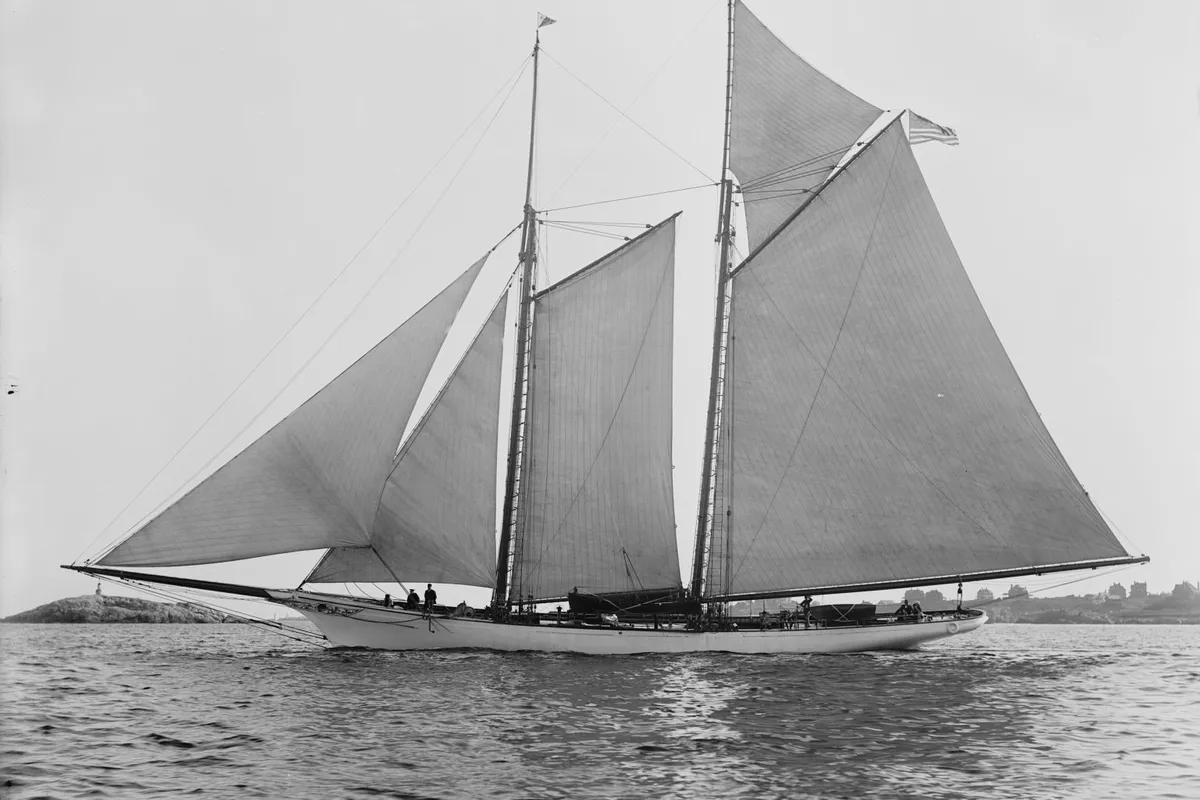by:Filippo Olivier
Image: “America” – ©Detroit Photographic
Humans have been sailing the seas for a very long time. In the beginning, boats ventured at sea for fishing, but they were also the only means of transportation and connection between islands. As ships increased in dimension, they also started to be used for warfare. Ships became a means for transporting goods at sea or on rivers and eventually also for moving passengers. Over time, the reasons for shipbuilding have changed, and so have design, materials and construction techniques of vessels. Commercial objectives drove shipbuilders’ choices. Onboard comforts and aesthetics were not a priority.
It is also worth remembering that until around the 1700 there were no schools of shipbuilding, designs or rules, and all knowledge was passed down orally by skilled shipbuilders. The construction of a ship is an ancient craft which did not evolve much for centuries.
The advent or recreational sailing drastically changed things. Sailing for pleasure is a recent practice. It is only in the course of the last two centuries that navigation for pleasure or sports did start.
Schooner
So it was that in 1851 the schooner “America” of the New York Yacht Club challenged 15 yachts of the “Royal Yacht Squadron” in the annual race around the Isle of Wight. The prize was the “100 Guinea Cup”. Two different construction philosophies were at a clash: the English believed that ships, to be fast and sea-worthy, had to be narrow and with deep keels, focusing on weight stability. Their search for speed resulted in the construction of the legendary clippers. Lets not forgeet that, In the second half of the 1800s, there were two main commercial routes: from China to England for tea and from Australia to England for wool. The ship that reached the destination port first would achieve the highest selling price for its cargo. Therefore, speed was essential.
Americans thought stability resulting from hull shape was the key, focusing on wider and lighter boats and, above all, shallower keels. Their search for speed developed through the experience of vessels dedicated to fishing: the glorious Bankers – so-called because they were used for fishing trips on the infamous banks of Newfoundland. Fishing boats with their catch had to reach the markets of the main cities along the coast as fast as possible, to beat the competition and obtain the best-selling prices. Thus boats had wide and shallow hulls.
Now back to the Isle of Wight. The schooner “America” finished the race 8 minutes ahead of its closest rival, ensuring victory and marking the beginning of one of the longest-standing competitions in sports, the “America’s Cup”. It was also the beginning of a continuous cycle of nautical design innovation.
Click here to read the full article and view associated images on Global Solo Challenge
